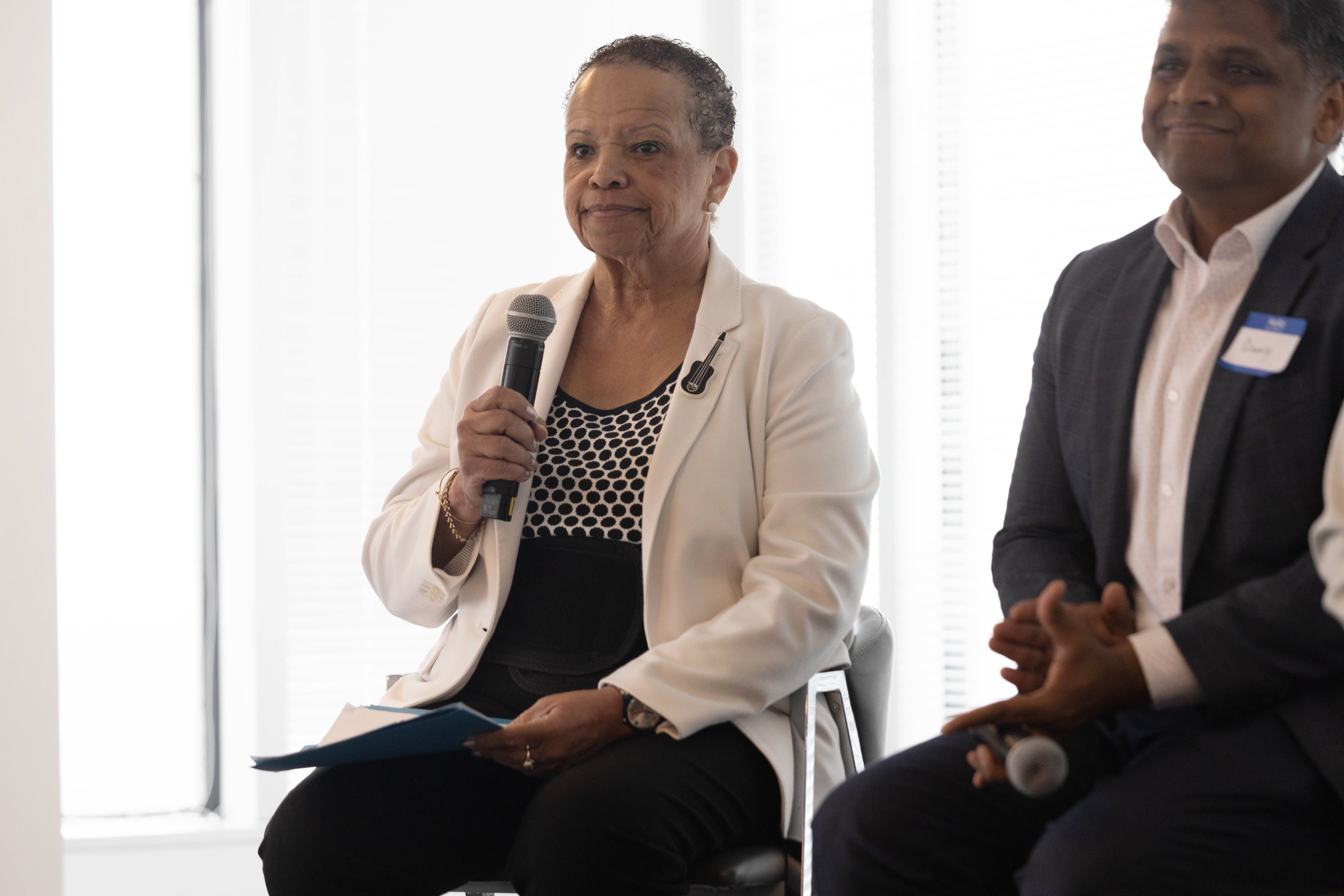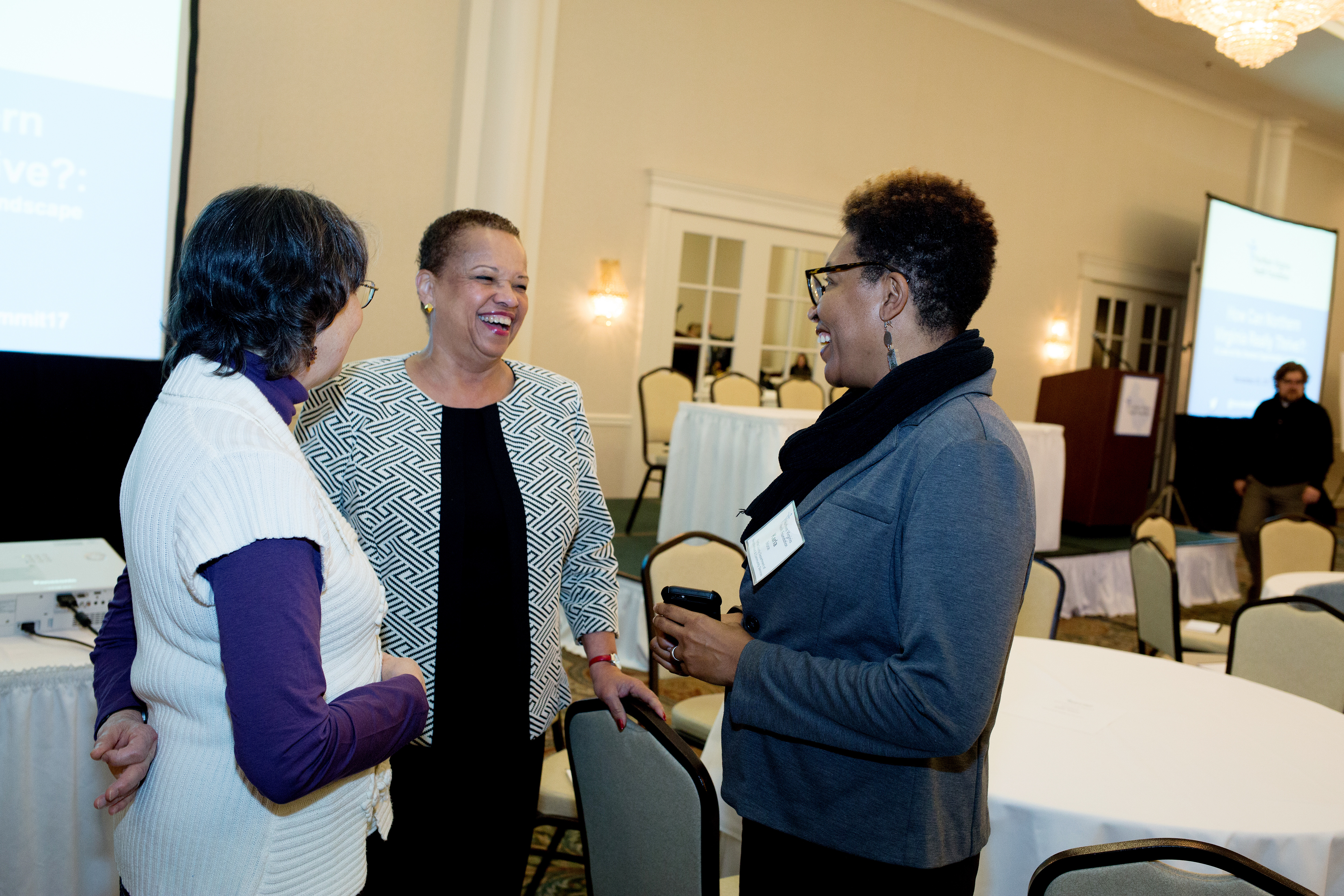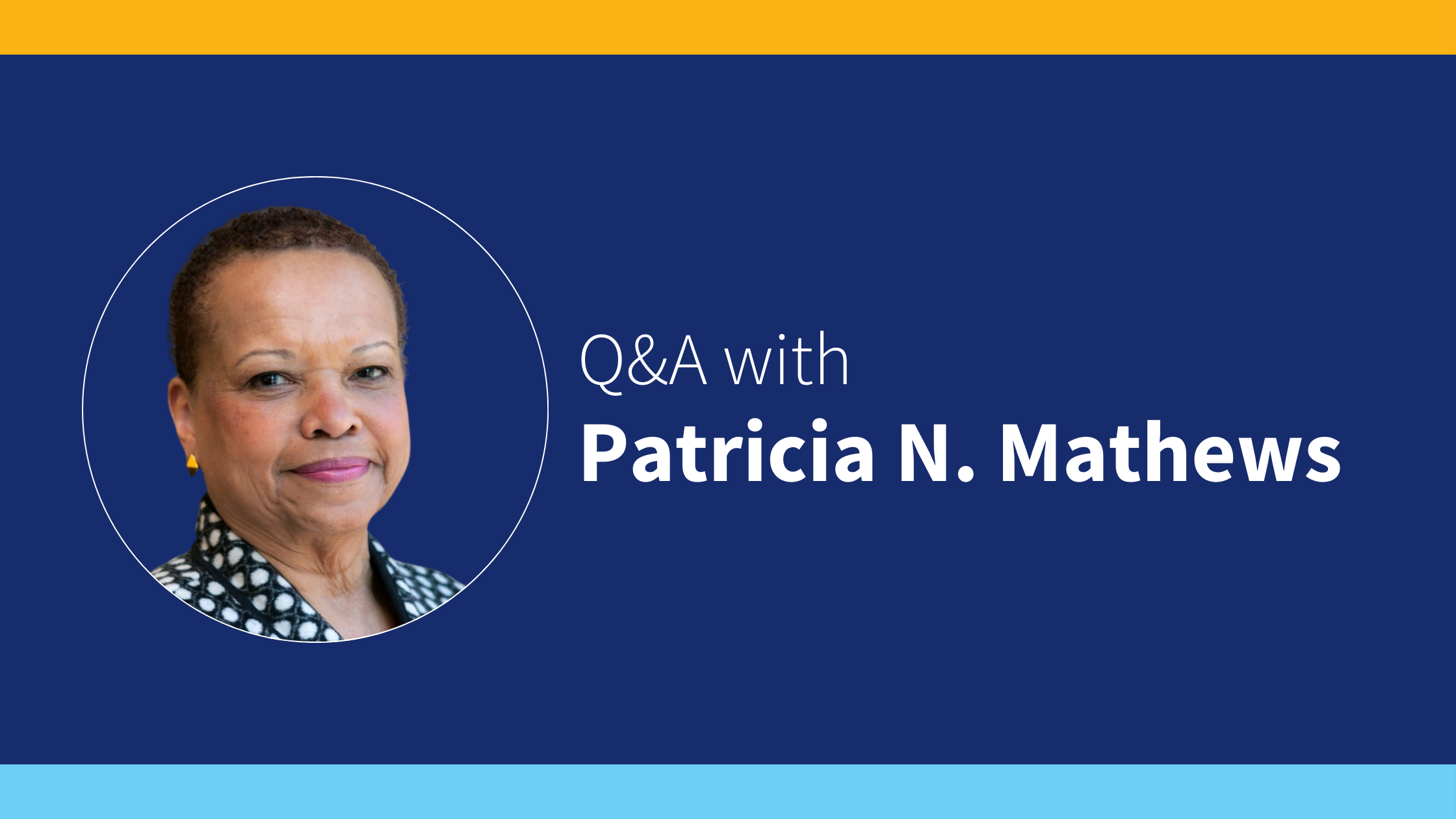Q&A with Retiring NVHF President & CEO Patricia Mathews
Patricia Mathews first came to the Northern Virginia Health Foundation (NVHF) as a consultant and was hired as the Foundation’s first staffer in 2005. Under her watch, the Foundation has provided more than $23 million in grants that fund health care safety net clinics and programs, regional data on health inequities, and cross-sector partnerships.
Last fall, the Foundation announced Ms. Mathews' plans to retire. Before she leaves her post, Ms. Mathews spent time with NVHF Board Chair Judy Feder, PhD, and NVHF Board Vice Chair Ilka Wilson Vallee, reflecting on the lessons she learned after nearly two decades of grantmaking.
Judy Feder and Ilka Wilson Vallee (NVHF Board): This announcement may come as a surprise to some. Why are you retiring now?
Patricia Mathews (PM): It's been more than 18 years, and I feel like we've achieved some major accomplishments in Northern Virginia. The health care safety net is much stronger, we’ve armed local jurisdictions with health data to advocate for real change, and created opportunities for health leaders to collaborate on systems change efforts. Obviously, there's more to be done. But I feel like the issues I most care about, the places where I feel like we were uniquely positioned to support, we moved the needle. It's a really good transition time.

Patricia Mathews leading a panel discussion at the NVHF-hosted event for the release of the report "Lost Opportunities" (2023)
NVHF Board: What will you miss?
PM: All the relationships. It is exciting to see how committed our grantees are, how passionate they are about their work, and how seriously they take what they do. And the relationships with those in local governments—the health officers, the equity officers, and those who run social service departments—have taught me a great deal, and have helped shape my thinking about the streams of work that the Foundation could attempt.
NVHF Board: It's hard to look back on your career without some distance, but you came to NVHF as a consultant, and at the time, the Foundation was just trying to get its footing. After you were hired, you put a lot of time into understanding the need in Northern Virginia, exploring the significance of race and social determinants of health, and helping guide the Board along the way. Reflect on the journey in bringing those issues into view for the Board and in Northern Virginia.
PM: Supporting Northern Virginia’s health care safety net has been, and likely always will be, core to the Foundation’s mission. That was work that we knew existed and we spent many of our early years funding organizations that provided health care services to residents with low incomes. Surprisingly, Northern Virginia did not have a large number of “medical homes” for low-income folks, and we were able to stabilize and—in several cases—expand those programs. That was really important, especially during the time of the Affordable Care Act discussions.
After a while, we took sort of a risk on looking beyond health care delivery. Tricia Rodgers, NVHF’s program officer at the time, was instrumental in those discussions. We were very aware of health disparities. But I think we all began to realize that you can’t talk about health disparities without talking about race.
In many instances, 19 years ago, talking about race in Virginia was a challenge. But having data on those disparities—at the census tract level—became invaluable in beginning to focus attention on the issue. The reports that we commissioned through Virginia Commonwealth University’s (VCU) Center on Society and Health, led by Dr. Steven Woolf, opened the doors for conversations that I would have said were nearly impossible when I first started.
NVHF Board: During your time, is there a single accomplishment, or it might be a few, that you feel most proud of?
PM: I am pleased that we have brought some financial stability and growth to the health care safety net clinics and programs in Northern Virginia. I am pleased that we've started some “upstream” work, supporting collaboratives between nonprofits and local governments to focus on improving neighborhood conditions that are leading to poor health. And I'm very pleased with the research we've commissioned from VCU, which has allowed both nonprofits and many local governments to use our data to reassess their programmatic and funding priorities.
NVHF Board: Any lessons that you’ve learned about grantmaking along the way?
PM: I’ve learned a lot but there are four lessons that stand out.
First, this work is not about the money—and there isn’t enough money. What I mean by that is that it is important to look at a variety of ways to address the challenges that low-income folks in Northern Virginia face. We are a small foundation, and we know that our funding cannot “solve” problems. But our dollars can make a difference. Equally important is providing technical assistance to grantees, bringing them together to share their own lessons learned with one another, working with local governments as thought partners, and providing data to illuminate conditions that exist in the region.
Second, risk has to be part of the grantmaking equation. When we started thinking about how to improve neighborhood conditions in order to improve health outcomes, we were not at all sure that we could have any impact. Funding a few nonprofits to create collaboratives with other community-based organizations and asking them to include local governments as partners in the work was a challenge. And then COVID-19 hit—and things slowed down. So we had to be patient. But the grantees kept at it, bringing together community residents, learning to trust local governments, and creating a vision for what they wanted to accomplish. This is messy work and it takes a long time, but it is the right work. And we have already seen some impressive results. The risk is clearly worth it.
Third, providing general operating support is essential. At the start of the Foundation, like many funders we focused on making grants for specific programs. And we might fund those programs for two or three years. And then we’d say okay, give us something else to consider. And the program that we initially funded was working well and making a difference, but then it didn’t have any financial support. We shifted to general operating support because we wanted the applicants to tell us what they needed, not ask us for funding for the new shiny program. And we still ask for logic models and evaluation plans. They must still be accountable for the funding. And all of our grantees know that if something comes up during the grant period—like a pandemic or a staff shortage—they can reach out to us and we will work with them to adjust both their expectations and ours.
Last, and probably most important, having reliable data is a critical factor for getting others—including local governments, other funders, and a wide group of nonprofits—to understand the challenges people face, and to become willing advocates for change. This work isn’t just about the Foundation, nor just about health. We’re talking about improving community.

Mathews, Lisa Kaplowitz, MD, and Fairfax County Chief Equity Officer Karla Bruce at the NVHF Community Health Summit. (2017)
NVHF Board: Looking ahead, if you can pass any advice to health philanthropy, what would it be?
PM: First, look at the private sector differently. They are businesses that, in many instances, employ the very folks whom we are trying to help through our grants. They have a vested interest in keeping their workforce healthy, and in improving neighborhood conditions. Don’t forget that many of our board members are in the private sector. They can become advocates for our work, not just within their office walls, but with elected and appointed officials, whom they may see far more frequently than funders.
Second, value clinics for low-income people as much as they value hospitals. We have clinics that have 18,000 unduplicated patients, yet over the years, there have sometimes been discussions about whether the staff salaries are too high. Really? We should not assume that providers or administrative staff should be paid less because they work for a “charitable” organization that serves low-income patients. Continuing to hold that belief creates several problems: It risks getting less qualified staff and providers; encourages high turn-over, especially in locales with a high cost of living; and limits the opportunity for diversity, particularly for those who do not have personal wealth or a partner or spouse to supplement the income.
NVHF Board: Any final thoughts?
PM: Two, actually. I hope that health philanthropy, in the best of all worlds, can figure out how to continue to support and grow the health care safety net, because we're always going to need it in some form or another. And, I hope that those in this sector seriously think about racial and health inequities and upstream work with social determinants. It will take much effort to work ourselves out of the current problems we face in the region. We are headed in the right direction, and the work is too important to stop now.

